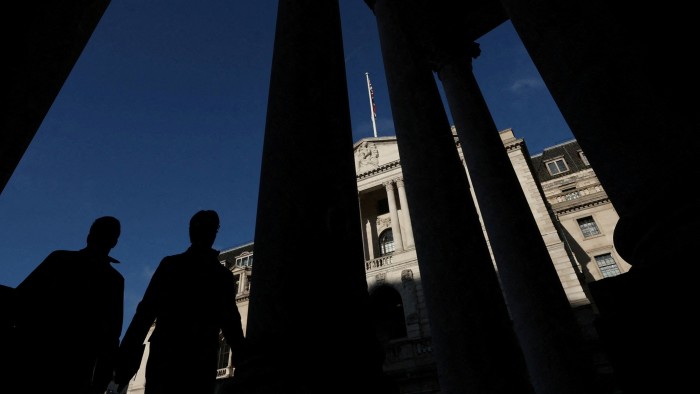Unlock the Editor’s Digest for free
Roula Khalaf, Editor of the FT, selects her favourite stories in this weekly newsletter.
The writer is a research associate at the Financial Markets Group, London School of Economics
There is much speculation that the UK government will have to cut spending in order to abide by the fiscal rules. With growth already weak, there are widespread fears of a “doom loop” whereby lower government spending leads to weaker GDP growth which necessitates further fiscal tightening. Therefore, I propose measures which should reduce fiscal pressures and stimulate investment spending at the same time.
It is important to observe that, currently, the interest rate paid by the UK government on its borrowing appears to incorporate a market expectation that inflation will turn out to be rather higher than the Bank of England’s target of 2 per cent. This is in contrast to, say, the US or the Eurozone, where the markets appear to expect inflation to be in line with their respective targets. In the jargon, the inflation risk premium in the UK is about 1 percentage point versus about zero in the US or Eurozone.
Any action by the government that helped reduce the IRP in the UK would help cut government spending. Indeed, if gilt yields fell by an amount equivalent to the current IRP, that would deliver a direct, cumulative saving of around £21bn over a five-year period. This calculation understates overall benefits to the economy as it excludes the indirect effects of lower long-term interest rates, such as a boost in corporate investment and thereby growth. On the other hand, one reason the IRP is high may be, for example, due to a perceived lack of credibility of the BoE. This may take time to change.
When I discuss the higher IRP in the UK with market participants, they often tell me that they believe that the country will be tempted to inflate away the high government debt. They point to the attack by Liz Truss as prime minister on independent economic institutions. Even if the current government believes that no one thinks it wants to amend the inflation target, markets worry that some future chancellor might be tempted to do so. Therefore, the current UK government needs to ensure that its successors find it either more difficult to mandate higher inflation or are less tempted to do so.
Of course, the UK government sets the inflation target. By contrast, in the US and Eurozone, the independent central banks pick their own definition of price stability. Markets believe that it is easier for politicians to amend the inflation target than for independent technocrats to change their definition of price stability. Therefore, the UK government should consider handing over the setting of the inflation target to the BoE in order to somewhat reduce the IRP and hence its debt interest bill.
In addition, the temptation to “inflate away the debt” would obviously be significantly curbed by issuing more index-linked gilts — bonds with payouts that are adjusted for inflation. Markets would see this as a signal that the UK government believes that the inflation target will be hit and that they should thus reward them with a lower IRP.
Recent analysis by the UK Debt Management Office shows that for gilts that have matured since their introduction in 1981 up to August 2023, the government has saved as much as £158bn (in 2023 pounds) in total from the issuance of ILGs. Yet, the government has actually reduced the proportion of ILGs in recent years. Prior to 2018-19, ILGs accounted for around 25 per cent of the annual debt issuance. In the five years since, it fell to around 14 per cent of annual gilt issuance. As it happens this reduction was, evaluated over the short-run, fortuitously timed as some of it came before the 2021-23 inflation spike to well above the inflation target.
But, looking forward, given the government continually repeats that it expects the inflation target to be met, it should put its money where its mouth is by significantly increasing the proportion of ILG issuance.
Authorities may be deterred from issuing more ILGs by the risks to the public finances from an inflation spike. But the government is often in a much better position to bear inflation risk than those in the private sector.
And the perceived risk could be mitigated by reform to how the Office for National Statistics accounts for an inflation spike. It considerably exaggerates the true underlying impact by showing the rise in the eventual redemption costs of the ILGs immediately instead of smoothing it in over the lifetime of the gilts.
The government should revisit the cost-benefit analysis associated with ILG issuance. Combined with handing over the setting of the inflation target to the BoE, that would send a powerful signal to investors and save money even if the IRP proves to be impervious to these government actions.





